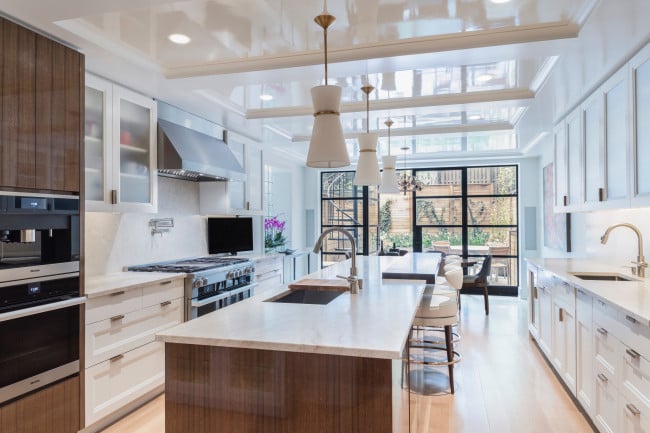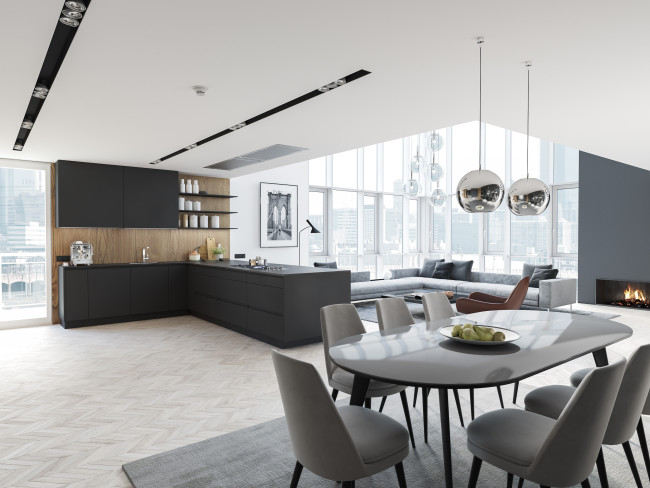Here's what you need to know about installing central AC in your NYC brownstone
- Many brownstone owners put ducted AC in their own residence and wall-mounted units in any rentals
- The cost to cool a four-story building starts at $72,000; installing rooftop condensers can add another $10,000-plus
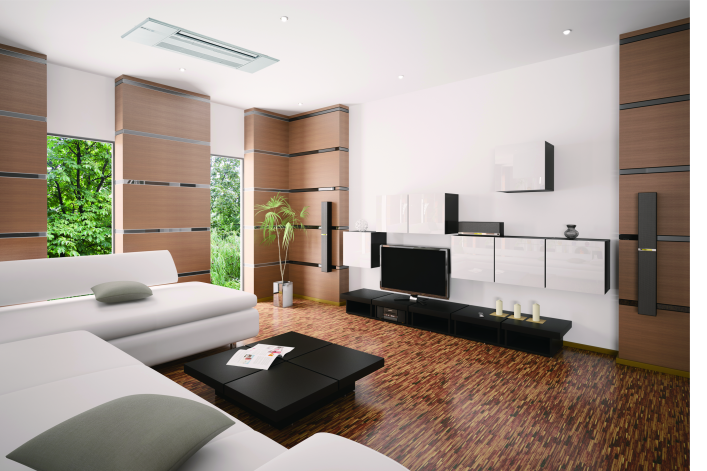
The EZ FIT Recessed Ceiling Cassette by Mitsubishi Electric is one type of mini-split system that doesn't require a lot of ductwork for installation.
Mitsubishi Electric
Bothered by the heat this summer? If you own a brownstone, you may well be considering installing central air conditioning to make your home more comfortable now that longer stretches of higher temperatures are predicted to be the new normal. (So long, unsightly window units.) Knowing your options will help determine if it’s worth the investment.
Here's a clue: "Buyers in the high-end/luxury market want 100 percent turnkey today," says Ravi Kantha, partner and director of Brooklyn sales at Leslie J. Garfield, a real estate firm that focuses on townhouses. "That includes central AC that won’t need to be replaced in the near future."
And if you own a multi-family townhome, installing central AC is a way to attract or keep tenants in a pricier rental market.
“Adding air conditioning will make the rental more competitive with newer developments. You can’t give them a swimming pool but you can give them this value-added amenity," says Soozy Katzen, a broker at Fox Residential.
[Editor's note: An earlier version of this post was published in August 2022. We are presenting it with updated information for July 2023.]
It’s a way to help your property stand out in the townhouse rental market, too. Nadine Adamson, a broker at Brown Harris Stevens, leases the garden floor of her own townhouse. “Now is an especially good time to spend money toward attracting qualified candidates.” (She should know—she also owns the townhouse catty-corner to hers and rents that as a duplex.)
Of course, it's a costly update, so that's an important consideration.
Brick Underground spoke to these and other experts about the ins and outs of installing air-conditioning in your NYC townhouse.
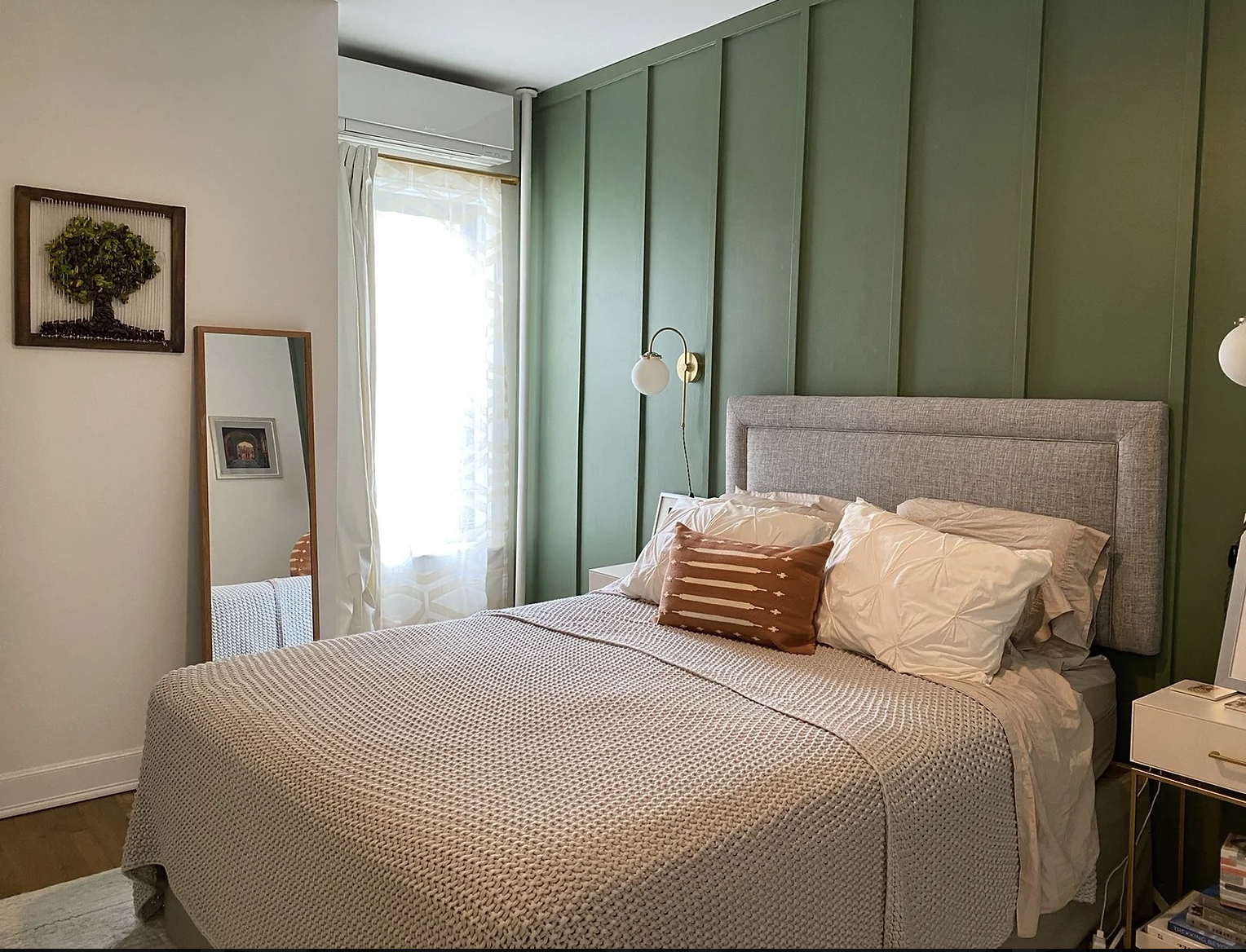
Ducted vs. ductless central AC
Which of the two basic AC options you choose will depend on the usage as well as the budget. Traditional split systems (what people think of as "true" central AC) involve a big air handler inside that branches out through the heavy use of ductwork, requiring hefty construction work to hide all the mechanicals. Wall-hung units (aka mini splits) are easier and quicker to install—no ductwork required—and therefore less expensive, though by no means cheap. These provide heat as well. Both rely on outside condensers.
The differences mostly boil down to installation and aesthetics. With traditional split systems, there’s simply no getting around ripping open the walls to run the ductwork.
“If you’re adding central air to your brownstone, you’re going to do a big renovation whether you realize it or not,” says David Ackerman, whose renovation company Urban Standard has added air conditioning to brownstones and townhouses as well as co-ops and condos across Manhattan and Brooklyn. “It’s very invasive work to add plumbing ducts and units to closed walls, so if it’s not part of a bigger renovation where the walls have been removed, you’re paying for the cost to have all the demo done and then new sheetrock installed with the associated patching and painting.”
Have more questions about adding central air to your home? Schedule a complimentary on-site visit or telephone consultation with the renovation experts at Urban Standard.>>
For that reason, Adam Meshberg, founder of Meshberg Group, an interior design and architecture firm, advises doing these projects as part of a larger renovation. “Once you are doing sheetrock work, you may as well do it properly to hide the ductwork and avoid ending up with soffits in awkward places,” he says.
On the other hand, no ductwork is required with mini-splits (though it can be optional; see more on that below). That's why these less-invasive options are the default for tenant apartments. But they are also catching on with landlords, who may not want the hassle and dust. Brands include Mitsubishi (a contractor favorite), Daiken, and LG (top pick of the engineers Meshberg works with).
Adamson, for example, went with wall-hung units in the rental as well as her own residence, where she didn't want to disturb the original plaster details. She put two units on the upper two floors with the bedrooms, which also keep the parlor floor cool (since warm air rises). “I don’t love seeing the boxes but I love how great they work,” she says.
There's a solution for that: Mitsubishi offers a low-profile, ducted unit that can go above the ceiling or under the floor as well as a recessed ceiling cassette.
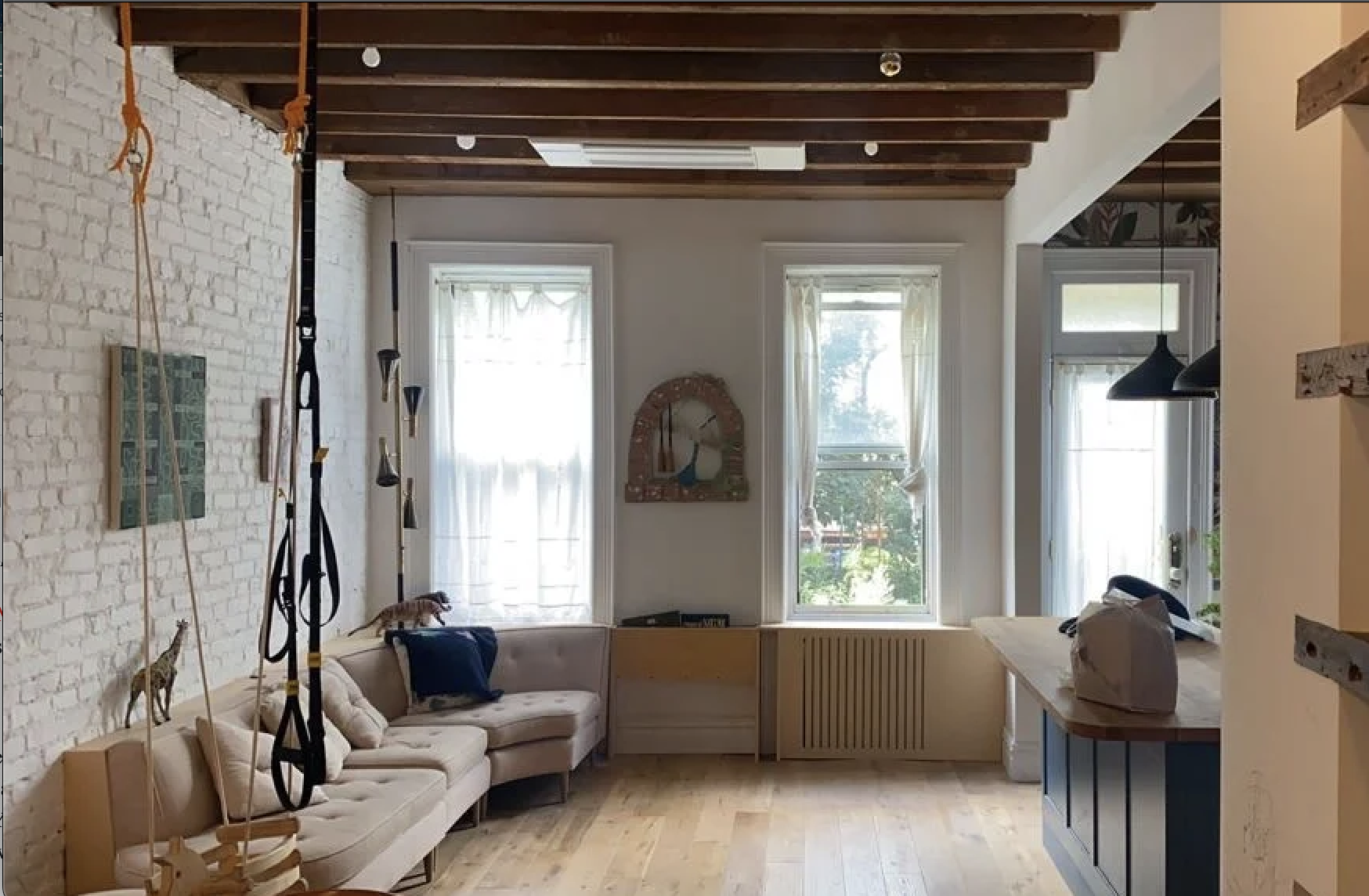
Meshberg usually recommends installing these kinds of mini-splits in a dropped ceiling in a closet, pantry, or bathroom and then run some ductwork through the joists to keep the ceilings elsewhere nice and high. "You only need about six inches for mini-splits compared to 10 inches for regular splits, and you won't end up with a big box along the side of the room," he says.
Vinnie Croce, owner of Cool Tech HVAC, says ducted mini-splits now account for about 20 percent of all his jobs. He, too, puts them in the ceiling of a closet or other space and says it will be enough to cool three to four other rooms, all with minimal ductwork. "It works well and is very quiet," he says.
That said, sometimes the ceiling is just too low even for that. In those cases, Meshberg says the console-type mini-splits (at only eight inches deep) are great for putting on the floor or in front of a window. He usually builds out a custom bench to house it. "It's like a through-wall package unit you see in a new apartment building, only much smaller and quieter. We do this a lot in garden-level spaces," he says.
In some rare cases, you may be able to retrofit your existing heating ducts to accommodate a new split system, drastically reducing the installation work.
Kantha, who installed central AC in his own townhouse, says a client and fellow townhouse owner was able to do this on two out of three floors and then use ductless units on the other floor.
Adamson reports a similar situation with one of her clients. So it's worth investigating for your own situation, just in case.
How much does installing central AC cost?
Costs vary, as no two townhouses are alike, and there are so many variables at play. Know that the cost of both labor and materials has continued to increase.
Croce puts the average cost to cool a four-story townhouse with Mitsibushi units at around $72,000, up some 12 percent over last year. He says it would be more like $62,000 if you went with Luxaire systems. This price is all-inclusive, too.
George Wong, owner of Mr. Air NYC, an HVAC contractor, says it would cost over $75,000 for a four-story building with ducted units in the owner-occupied duplex and ductless in the rental half.
But the costs can quickly spiral up if you plan to put condensers on the roof, which is by far the more common occurrence. "You can mount one in the backyard or hang it from the rear but not two," Croce says. Both must go on the roof in a historic district.
Rooftop installations could add over $10,000 in filing fees from the Department of Buildings; $5,000 to $20,000 for steel dunnage (or support); $2,000 for a crane to hoist it all up; plus other costs to meet fire department code standards.
Case in point: Meshberg says installing AC will cost between $80,000 and $100,000, including electrical wiring but not necessarily all the rooftop expenses, for a four-story, 20-foot-wide townhouse on the Upper East Side. "You can't cover the whole floor of a big footprint with just one handler. The more zones you have, the more handlers and condensers you will need, and the more construction work is required," he says.
Score one more advantage for the Mitsubishi mini-splits: Wong and Croce say you can run as many as eight different units on just one outside condenser (more like five or six for other brands), each with its own zone. The condensers are usually smaller too. "That makes it easier to get by landmarks," Meshberg says.
You can even hide a ground-floor condenser behind a cool facade.
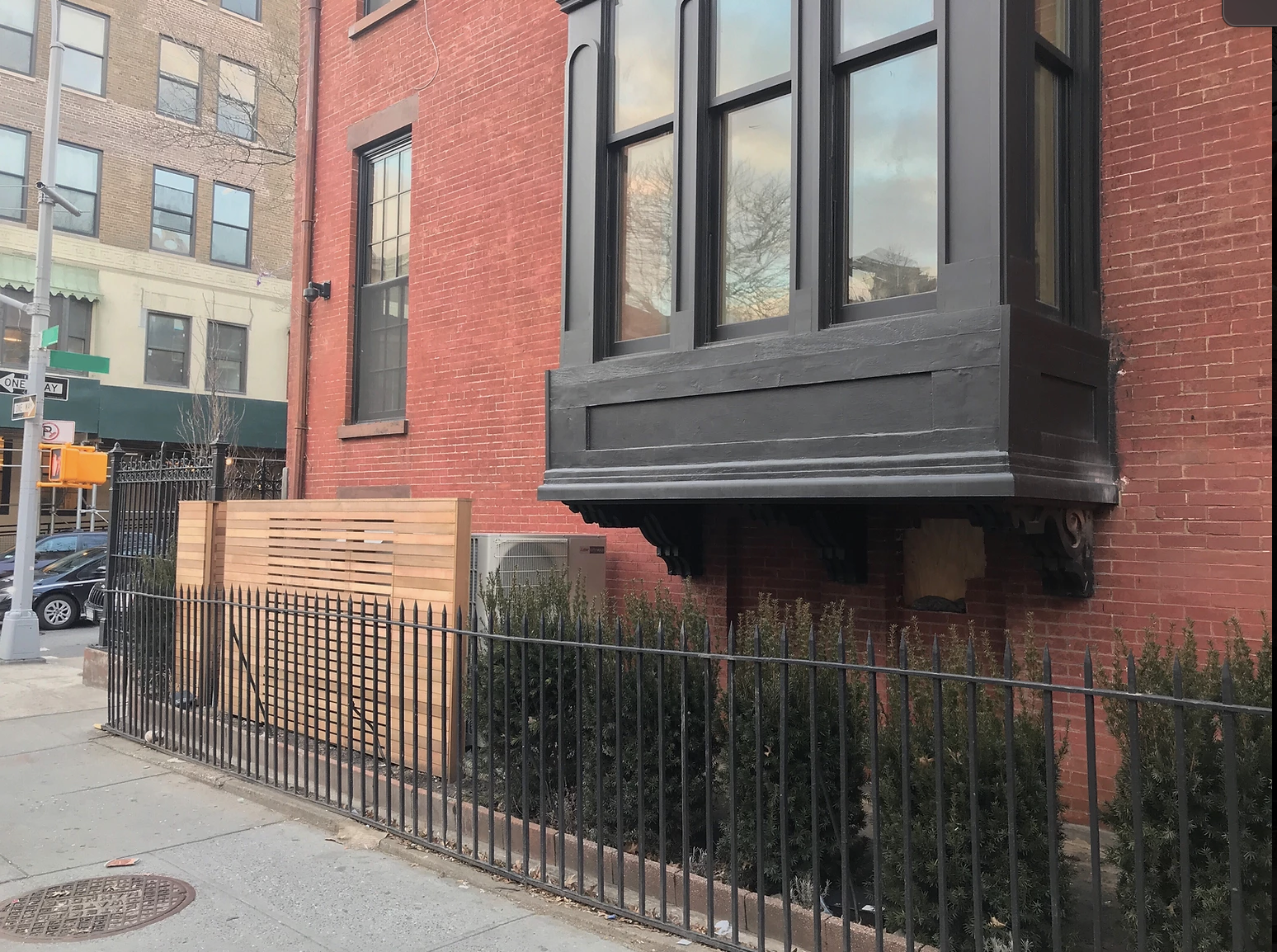
Is putting central AC in a rental worth the investment?
The answer is a resounding yes. Kantha has seen potential high-end renters shun apartments when there's no upgraded A/C, especially in larger spaces where you'd need two or three window units per room. “Tenants who are spending anywhere from $5,000 to $20,000 a month expect to have functional air conditioning they can control on a thermostat,” he says.
So he recommends an HVAC upgrade to all his landlord clients, minimizing expenses by putting A/C only where the tenant needs it and going with mini-splits. “People can look beyond the boxes, so the added expense of installing ducted AC is not going to be worth it in terms of rental value,” he says.
Unless, that is, you are updating a high-end or luxury rental, in which case Kantha says there's an expectation of not seeing wall-hung units.
If that's your situation, he suggests following Meshberg's lead and hiding the mini splits in the walls like ducted systems. As a bonus, each zone remains separate, meaning if one breaks, the others may still operate. "This can be the difference between staying in a home and needing to find temporary housing until repairs are made," Kantha says.
Adamson points to another benefit: Having mini-splits makes it easier to charge tenants for their electricity, since each system is clearly earmarked (the same goes for heat). “It gives the tenant individual control over the thermostat and then they can eat the cost should they crank it up and leave town.” (Though she herself would encourage a more energy-saving ethos.)
And according to Energy Saver, the U.S. Department of Energy's consumer resource on saving energy and using renewable energy technologies at home, ductless units are as much as 30 percent more efficient than central systems.
Will adding central AC help with resale value?
Once again, the answer is you bet.
Echoing Kantha's earlier statement about high-end buyers wanting 100 percent turn-key deals, Barbara Fox, president of Fox Residential, relayed a recent deal that ended up hinging on central air. "The buyers wanted an apartment in triple-mint condition—and they were willing to pay for it," she says. So Fox and an associate showed them a triple-mint Upper East Side classic six where the sellers had put in central air conditioning throughout the entire apartment except for the two bedrooms, which had window units. Despite loving the apartment and having an accepted offer from the seller, they walked away from the deal when they realized how much work would be involved in expanding the central air to those spaces. That's saying something.
And remember: This is one investment that you'll be able to enjoy in the meantime.
What about installing a new heating system?
According to those interviewed here, many people prefer to stick with their existing radiators and just spend money on air conditioning. But mini-splits provide both cooling and heating. "There's a special valve that closes up in the winter, and then the built-in heat pump produces heat," Croce says.
Wong says this allows you to do away with a traditional mechanical room, cutting out the boiler and using these as the sole source of heat. "Some models can go down to -13 degrees Fahrenheit, providing plenty of heat."
You'll also be reducing your carbon footprint, which is why the New York State Clean Heat Program offers rebates and other financial incentives to switch from fossil fuel to electrical heat pumps. (Rebates are also a proposed part of the Inflation Reduction Program that was recently passed, though that will likely take time to be implemented. Stay tuned.)
At the very least, Wong recommends relying on mini-splits for all but the most frigid months, so maybe you only have to ignite the boiler for February and March. "It's more economical because you are only heating the zones you are in rather than the entire building," he says.
Meshberg agrees: "The cost for the additional heating will be minimal. You'll end up with forced hot air plus radiators, which can be pretty good for a cold house."
You Might Also Like























